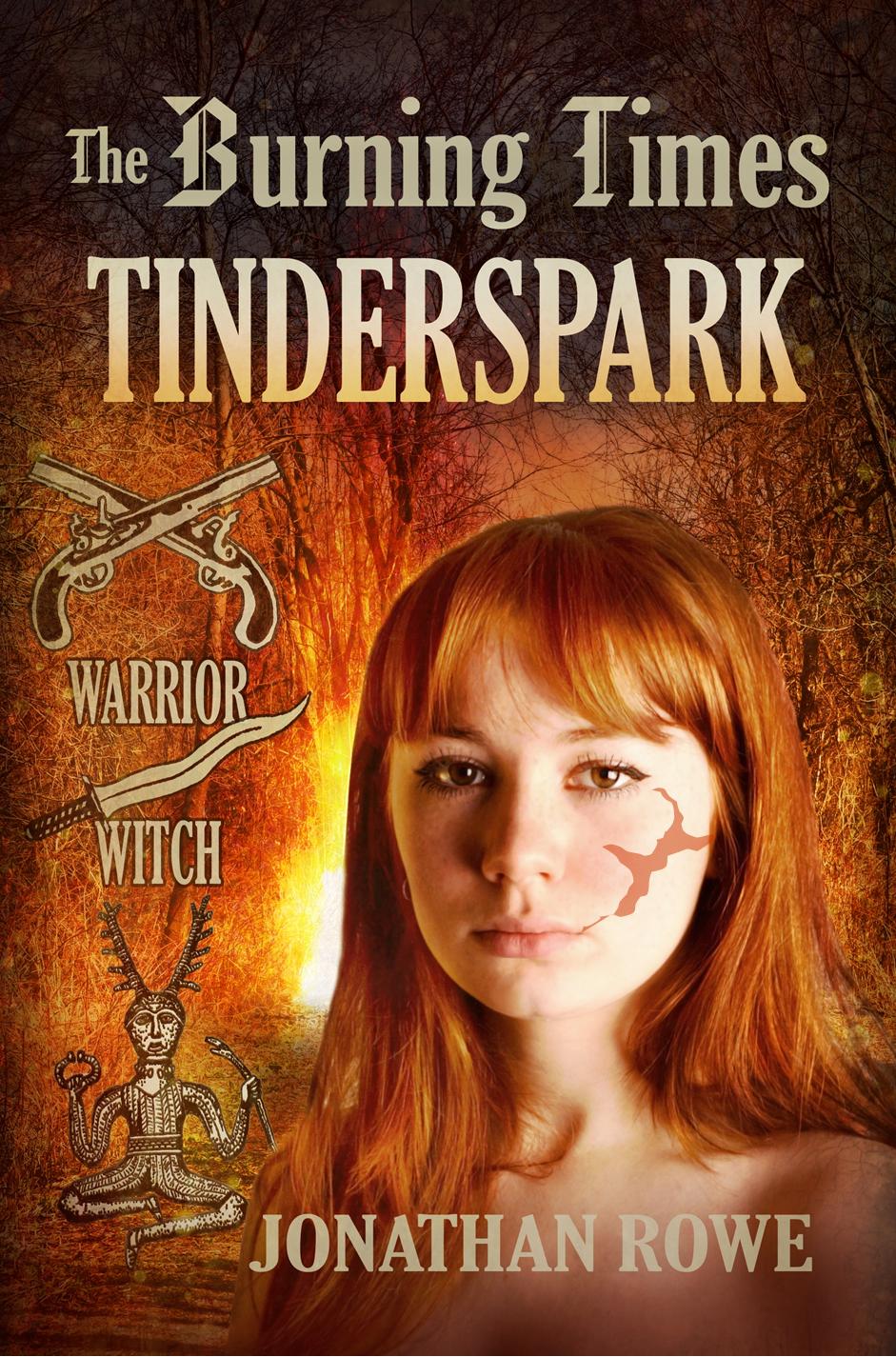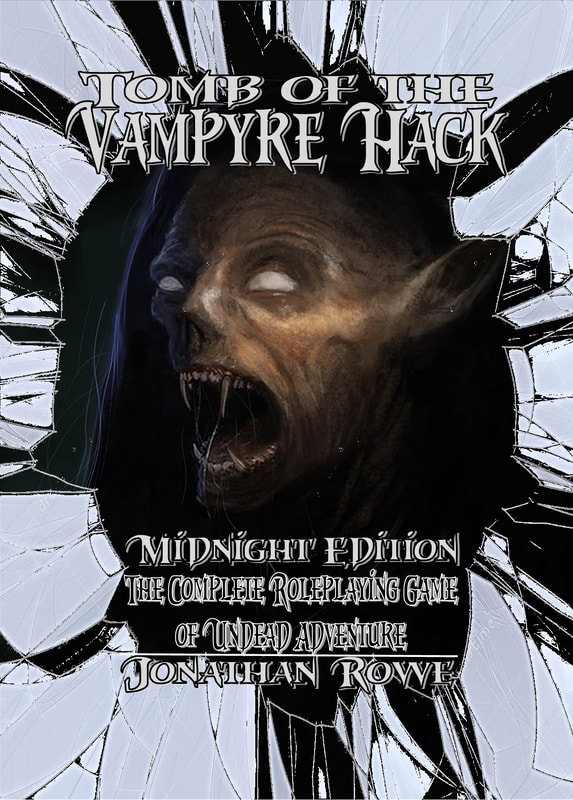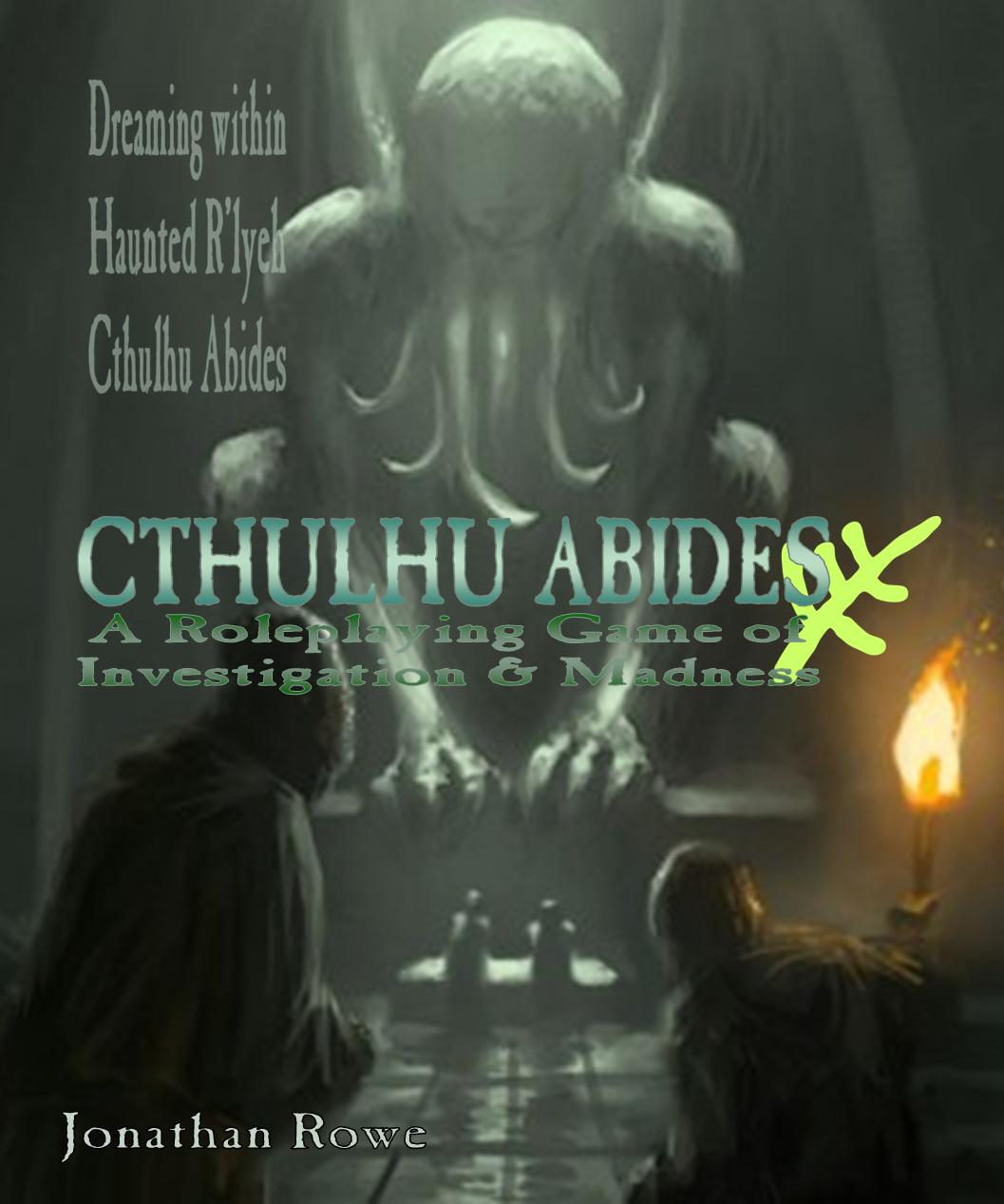|
Shakespeare knew a thing or two. In The Tempest, the lovers Ferdinand and Miranda are discovered playing chess: an image of harmony as they engage in play-conflict, while around them the real conflict on the island is harmonised by the putting on of a play. Then Miranda, rising from her toy soldiers, sees real soldiers for the first time and exclaims: "O brave new world that has such people in it!" After a couple of weeks of isolation, you get a sense of Miranda's delight in human contact. Have you ever been so involved in a game, you forget there were real people out there, playing it with you? But much worse is when you look around and all the real people have all disappeared and you're just surrounded by chess sets! Wait a moment: THAT'S not Ferdinand and Miranda! The business of reconnecting with people through play is on my mind. Which is to say, yes: I've been trying to get round the current crisis by doing roleplaying online. Online roleplaying. It’s a substitute isn’t it? Like nicotine gum or aspartame. What you want is to be round a big table with your friends, rattling dice, scribbling notes, cracking jokes, putting on voices, gesticulating, pausing for outbursts of hysterical laughter. What you get is a bunch of people squinting at their webcams saying things like “Is this ON?” and “I can’t HEAR you!” and “Can anyone hear ME?” and “Where did Rob go?” My gaming group and I, we are getting round the ‘Rona by meeting in Google Hangouts to enjoy fun, regressive D&D. I haven’t taken D&D seriously in an age but it lends itself to this new medium because (i) everyone knows what they’re doing in a dungeon and (ii) dungeons impose their own rhythm and discipline which you can lean into pretty hard while people are trying to get their webcams to work. The medium has actually brought together old faces and new faces: veteran gaming buddies and new ones, people I’ve never gamed with before, even my daughters. Online interaction might be awkward but it has expanded our circle and broadened our social world. I suppose, like a lot of ‘Rona coping mechanisms, it disrupts our old patterns and networks, causing us to reform them in new and interesting ways. Now THAT'S Ferdinand and Miranda I think about The Tempest a lot, because it seems to be about the power of creativity and play to unite people under difficult circumstances. Prospero and Miranda are isolated on their island and Ariel's magic ensures the shipwrecked protagonists are socially distanced. Yet they are nonetheless brought together and reconciled; they see each other with fresh eyes thanks to Prospero's masque: the art of a Dungeon Master. Welcome to the White Box Back to D&D. Or rather, WHITE BOX RPG. You see, the question of ‘What version of D&D do we play online?’ is a vexed one. Tactical movement is out since I can’t cope with the psychic overload that is Rolld20. It’s theatre of the mind all the way for me. I’m too set in my ways to master 5th edition. Heck, I’m too set in my ways for 3rd edition. So it has to be loosey-goosey fly-by-the-seat-of-your-pants D&D. That means Old School D&D. The Oldest of Schools. Charlie Mason produced White Box RPG as a 2017 update of Swords & Wizardry: White Box (2009), which is Matthew J Finch’s ground breaking retro-clone of the original Gygax/Arneson D&D ruleset from 1974-8 (known to fans as the ‘White Box’ set – hence the name). Mason's White Box is a sweet little 144 page softback with fantastic B&W art in that heavy, baroque 1970s/80s style. You can pay (not very much) for a nice copy or just download the PDF for free. What you get is D&D stripped down to its undies and cranked up on Jack Daniels. Everyone gets six sided Hit Dice. All the weapons do a single d6 damage, +1 or -1, and all the monsters do 1d6 damage, except dragons etc (they do 2d6 damage). Time that you’re not wasting consulting tables or navigating stat blocks is time that you are spending on vivid description or fiendish creativity. Or getting your webcam to work. Either way, it’s liberating. White Box has some 21st century touches. It offers the Ascending Armour Class system as an option and I fully endorse that: AC becomes the number you need to roll on a d20 to hit your opponent and everyone gets to add their Hit Dice to the roll. I’ll review White Box in more depth in another post: suffice to say, I’m thoroughly enamoured. I can provide my players with little PDF copies and they – coming from a range of backgrounds, ages and differing experience with RPGs – all grasp these mechanics instantly, with veterans having no real advantage over newcomers. Welcome to the Dungeon We have a group of players, consisting middle aged men, young thrusters in their 20s, my crazy daughters, a motley crew and most have them have never roleplayed with each other before or with me DMing before. It’s going to be important to choose the right scenario. So I chose the wrong scenario. Let me be clear: there’s nothing wrong with Dread Crypt of Skogenby. It’s a crackin’ scenario for TORCHBEARER RPG and it converts to D&D easily: I’ve got a blog post discussing it. Click the image to visit the PDF Yes, it's a crackin' adventure but it is quite a demanding one. It’s also a one-shot that funnels the players into a tense showdown with a powerful spirit. I know that, ordinarily, my round-the-table players would gobble this scenario up. They would delight in figuring out its evocative mythology, they would engage with the spirit in a theatrical way, they would find some clever-sensitive way of laying it to rest and/or retreating with the young girl they’d been sent in to rescue. In the online version of things, not so much. The unholy trinity of mic/webcam/text is a bit alienating anyway and can make strangers of people that we feel we know so well when they’re sat across from us in person. Add to that the problem that some of these people really don’t know each other all that well and you have a communication problem. Again, round the table there’s often nothing else to do but speak up. But if you’re at home, in front of your screen, dealing with people remotely, the temptation is to let others do the heavy lifting. I think I was less forceful and directing as a DM; the players were less communicative and mutually supportive, less curious. Anyway, it was a Total Party Kill. They all died. Thank you folks and good night. See you next week, I hope…! Welcome to the Mega Dungeon You see, a bunch of new (to each other) players tentatively exploring RPGs in a new medium don’t want a tight, demanding one-shot scenario. They need something a bit more generous; something that gives them space to wander and time to get onto each other’s wavelengths, master the technology, find a rhythm, grow some confidence. What they need is a great big wibbly-wobbly dungeon with lots of empty rooms and long corridors, traps and puzzles, rooms to inspect and then not go into, wandering monsters and big piles of treasure. They need to be able to go where they want and stop when they want, without being shepherded into a scary climax or forced to confront something nasty. They need a sandbox to play in. They need a MEGADUNGEON! The discussion about what megadungeons are and what’s good or bad about them can wait for another blog post – but if you can’t wait that long, go and read this: The beauty of a megadungeon is that it’s huge, the entire campaign takes place inside it (more or less); you can wander in at 1st level and keep on adventuring till you wander out at goodness-knows-what-level. Bad megadungeons are all hack’n’slash but good ones have NPC interaction, politics and factioneering, mysteries and a sense of emergent epic plotting There are a lot of these on the market, so I questioned my sources on the Outer Planes and came up with two: STONEHELL: DOWN NIGHT-HAUNTED HALLS and BARROWMAZE COMPLETE. Click the images for links to lulu (Stonehell, also PDF version) and drivethrurpg (Barrowmaze) There’s a clear difference in the products. Greg Gillespie’s Barrowmaze was crowdfunded and has top notch production values: striking old-school art (some of it by TSR luminaries), wonderful graphic design and maps, the whole 260 pages are sumptuous. It’s also ambitious. It introduces you to a region, its history and religions, the vast Barrowmaze itself and the myriad micro-dungeons that sprout out of it like toadstools. It will take me a month to digest this and another month to dream about it. Then I’ll be ready to DM it. I reckon the ‘Rona will still be around by then. Michael Curtis’ Stonehell is a much more modest affair. It’s softback, 134 pages, 5 dungeon levels and 700 rooms (but more levels available separately). The art is minimal, the graphics are competent, but it’s crystal clear throughout and uses Bowman & Shorten’s 'One Page Dungeon' method. Each level is introduced with a few pages of discussion and spotlight on key monsters, NPCs and artifacts, then the level gets broken into 4 quadrants and each quadrant has its map and random tables on a single page and the room descriptions on the facing page. So easy to use. You can almost pick-up-and-play. Both dungeons are designed for use with Daniel Proctor’s LABYRINTH LORD, which is a popular retro-clone of the Moldvay/Cook Basic/Expert D&D rules from 1981, extended up to 20th level. Now Moldvay/Cook D&D is pretty much the Rosetta Stone of early Fantasy Roleplaying (before things started going all strange with cantrips, non-weapon proficiencies and healing surges), so if you can’t make Labyrinth Lord convert to your preferred OSR version of D&D then there’s something the matter with you. Stonehell it is, then We’re starting with Stonehell. Don’t worry: no spoilers. The players created their characters and this follows a now familiar trajectory: the characters are all a bit silly, but over the first few sessions they discover their own identity and become more serious and flavourful. Homebrew class variants and races pop up instantly: Darjeeling is a convicted Thief whose hand was chopped off. He has a mechanical socket there now into which he slots a range of attachments: grapples, cork screws, files, flints for lighting tinder, something for taking stones out of horses’ hooves, that sort of thing. ‘Swampy’ is a Swamp Elf, with a sort of Iroquois aesthetic. He served a tour with the Warden Rangers who gave him his nickname. He doesn’t share his true name with anyone until they’ve earned his loyalty and trust. He's good with poisons but his magic is slow. Horatio is a Street Mage with a newt familiar named Nelson. Street Mages have trouble with real magic but they’re great with smoke bombs, sleight of hand and chicanery: they can pick locks and wield short swords. Shame he only has 1 HP. Dian is a Danaan Druid, who has a wild boar heart-companion and wields spears and scimitars, but turns faeries instead of undead. Good luck with that! Along the way, we have to introduce a new PC, but since the gang are exploring a crypt, it makes sense for the character to be Gore, a Half-Ghoul who has spent a century locked in an ossuary, gradually evolving a rational mind. If you're intrigued, the file for these new variants is available below: it will work for any other early D&D variation (Holmes, Basic/Expert, etc).
We've run a couple of sessions. It’s a fitful process – and not just because of the Internet, which enables and impedes in equal measure, according to its whims. I’m used to creating a campaign with a lot of setting and clear plot arc in mind then getting players to create the sort of characters needed to tell that story. This experience reverses all that: the players roll dice and create whatever characters they see fit then charge off into Stonehell and out of this chaos something orderly emerges, somehow, perhaps. It’s a style of roleplaying I haven’t really explored since I was a teenager. I find myself strangely energised by all this. I'm buying better mics, a webcam that works, browsing gigantic dungeons, composing or stealing homebrew rules, anticipating the next session when the PCs might get to that room or fall into that trap. The news media brings its daily miseries as the 'Rona prowls around our houses, but here, for a while, playing these games, I feel removed from the present anxieties. I identify, I hope optimistically, with Shakespeare's Prospero as he brings his masque to a close: We are such stuff
0 Comments
Leave a Reply. |
30 Minute Dungeons
Essays on Forge
FORGE Reviews
OSR REVIEWS
White Box
THROUGH THE Hedgerow
Fen Orc
I'm a teacher and a writer and I love board games and RPGs. I got into D&D back in the '70s with Eric Holmes' 'Blue Book' set and I've started writing my own OSR-inspired games - as well as fantasy and supernatural fiction.. Archives
July 2024
Categories
All
|
||||||










 RSS Feed
RSS Feed
























